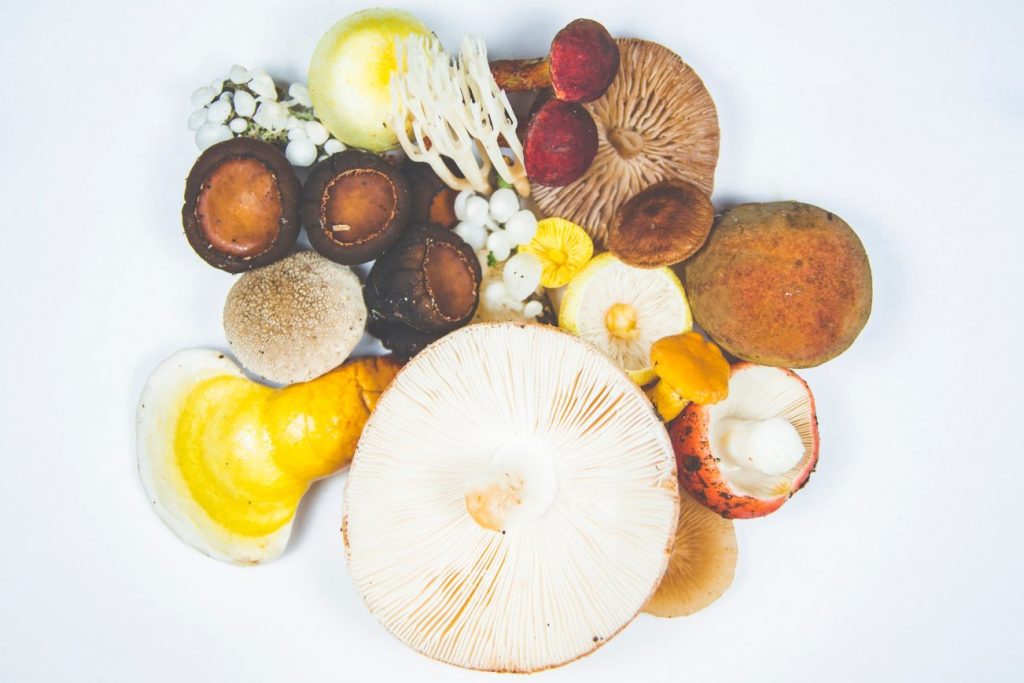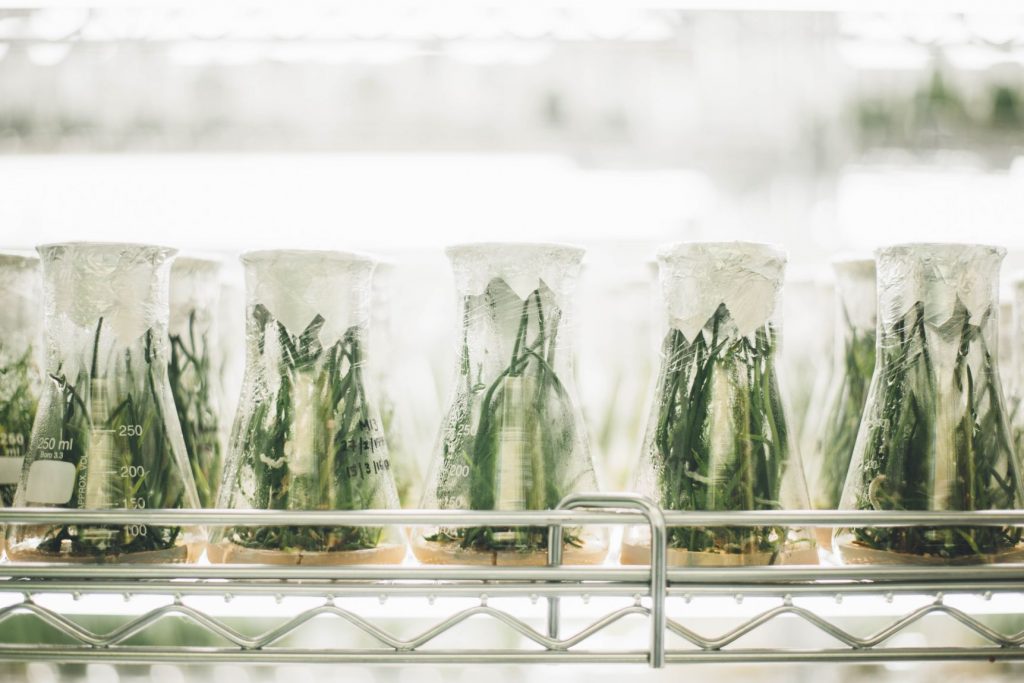Did you know you can make a lot of very useful products with fungi? For example bioplastics. However, application on a large (industrial) scale is still limited to a few examples. This is partly due to the characteristics of fungi as a mold: it’s difficult to prevent it from growing in unwanted places during the production process.
The interest in bioplastics and sustainable biofuels is increasing. As a result, the interest in industrial biotechnology that provides enzymes, is also increasing. Fungi are very effective for producing these enzymes. This way of production is already done for certain type of foods, but also for detergents, cosmetics, medicines and other healthcare products.
So how can these fungi in a form of enzymes be used to produce other products, like bioplastics? As the public discourse on plastics is growing, we are sure that bioplastics have a lot of potential in society.
Fungi in the traditional production process
Fungi is already being used for ages in the production of food. For example, the use of fungi in the production process of Japanese rice wine, is centuries old. And since at least the 10th century AD, fungal spores are used and manipulated, for example in the production of cheese.
Already in 1894, a Japanese man called Jokichi Takamine applied for the patent on the amylase production of Aspergillus oryzae. This can be used in the production of alcohol. Since this moment, the development of fungi for industrial purposes took off. An English textbook on industrial mycology published in 1938 explained fungi as a biochemists in industry. In the book, various fungi species were described extensively. At the same time, several companies were producing enzymes that could be used commercially, of which, among others, DSM, DuPont and Unilever.
Improvements in the production of fungi
Initially, fungi were produced in a classic way with stocks and regular improvements being implemented in the production process. In the 1970s, molecular biology innovations made it possible to genetically modify (manipulate) fungi. The results was that they were able to produce specific industrial enzymes. And: fungus were able to produce its own enzymes in large quantities (like for example amylases), but it was also possible to produce enzymes from other quantities and fungi.
As a result, a wide range of applications were introduced. For example the production of another enzyme: chymosin. Earlier, this enzyme was taken from the stomach of a calf, but since the first application it was possible to produce it in isolation. This enzyme is used in the production of cheese, in the process of curdling the milk.
Another simultaneous development was the use of fungi in the pharmaceutical industry. For example to produce important proteins and insulin for the treatment of diabetes. This fungus did exist, but it was only possible to isolate a limited amount of this protein from animal and human material. This was not enough to fill the demand. Also, it appeared that the proteins that were isolated from animals could increase the risk of an allergic reactions, and even contamination with animal viruses.
The research development on fungi aloud for new, better solutions in the field of industrial biotechnology and pharmaceutical industries. The application of these findings have benefited us all, at least to some extent.

Difficulties in the production process
As I already mentioned, using fungi in production processes also has its difficulties. In the above mentioned examples, these difficulties concerning working with fungi also appeared quite rapidly. Fungi is a life creature, which basically does as it pleases. It appeared in the above mentioned production process that the foreign fungal proteins were degraded quite quickly by its proteases. These are protein splitting enzymes that the fungus itself produces.
Although solutions have been found for this problem, this degradation of proteins by proteases is still an important problem to produce non-native proteins in fungi in an efficient manner. However, the knowledge about this process, and thereby the possible solutions, has been extended intensively. This has made it possible to very precisely prevent the production of protease. Surprisingly, it also appeared that other fungus, like the fungus Trichoderma reesei, is regulated completely different. It actually appears we still know very little about fungi, and there is still a lot more to discover and investigate. The goal is simple: to find a fungus with the optimal characteristics to produce fungal proteins on an industrial scale.
To achieve this goals, more problems are to be solved. For example, the oxygen supply, the production of acids, the agility of the culture and to limit the characteristic of fungi to grow on everything and everywhere. Knowledge about the growth and reproduction of fungi is still quite limited. Research is therefor necessary.
Fungi used for the production of other materials and bioplastics
As described above, fungi are used in the production process of enzymes and proteins used in the pharmaceutical industry. Additionally, fungi are also a great resource in the production of raw materials in the chemical industry. In these industries, fungi are used in particular in the production of acids (for example citric acid, itaconic acid and gluconic acid), which can produce a large amount of fungi. These resources are used in the production of for example bioplastics, but have a wide range of applications in industrial production sectors.
The use of fungi to produce bioplastics involves a complicated biochemical synthesis in the fungal cell. Several genes of the fungus play a role in manipulating the synthesis. This part of the industrial application of fungi also undergoes a continuous need for further research. In the case of the use of fungi for bioplastics, further research concerns the understanding and control of the biosynthesis of fungi to produce more of these acids.
The developments in related fields of research help tremendously. Like for example system biology to allow to take a snapshot impression of the genes, metabolites and proteins of fungi. And next to compare these in different conditions to understand more about its processes and characteristics in different situations. This knowledge will help researchers to further develop the production processes in which fungi are involved. And it helps researchers to find solutions for problems in the production process, such as concerning protease formation, the control of biochemical solutions and the manipulation of fungal growth characteristics.
